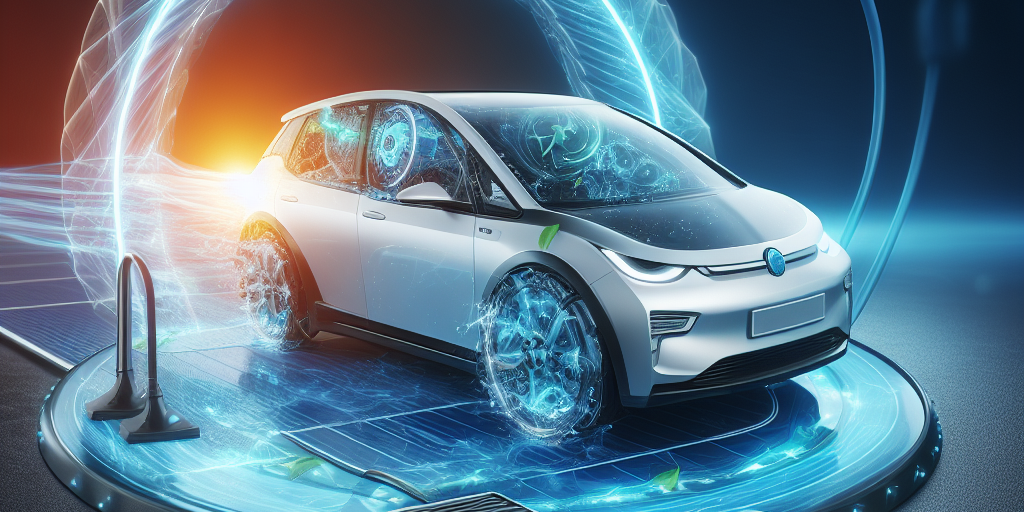Self Charging Electric Vehicle



Self-charging electric vehicles are a type of hybrid vehicle that combine a conventional internal combustion engine (ICE) with an electric motor and a battery. Unlike plug-in hybrid vehicles (PHEVs), which need to be connected to an external power source to recharge their batteries, self-charging electric vehicles use the energy generated by the ICE or by regenerative braking to charge their batteries. This means that they do not need to be plugged in, and can operate in electric mode for short distances or at low speeds, reducing fuel consumption and emissions.
Self-charging electric vehicles are also known as self-charging hybrids, mild hybrids, or series-parallel hybrids. Some examples of self-charging electric vehicles are the Toyota Prius, the Lexus RX 450h, the Hyundai Ioniq Hybrid, and the Kia Niro Hybrid. These vehicles have different levels of electric power and range, depending on the size and capacity of their batteries and motors. Some self-charging electric vehicles, such as the Sono Sion, also use solar panels integrated into the bodywork to generate additional electricity from sunlight.
Self-charging electric vehicles have some advantages over pure electric vehicles (EVs), such as lower upfront cost, longer driving range, and no need for charging infrastructure. However, they also have some disadvantages, such as higher maintenance cost, lower fuel efficiency, and higher emissions than EVs. Self-charging electric vehicles are not considered zero-emission vehicles, as they still rely on fossil fuels for most of their energy. Therefore, they may not be eligible for some incentives or regulations that promote the adoption of EVs.
Self Charging Electric Vehicles: A Reality or a Myth?
Electric vehicles (EVs) are becoming more popular and affordable as an alternative to conventional cars that run on fossil fuels. EVs offer many benefits, such as lower emissions, lower maintenance costs, and quieter operation. However, one of the main challenges that EV owners face is the availability and accessibility of charging stations. Depending on the type and model of the EV, the battery range can vary from 100 to 500 kilometers, which means that frequent charging is necessary for long-distance trips or daily commuting.
To address this issue, some car manufacturers have introduced a concept called "self charging electric vehicles" or "self charging hybrids". These are vehicles that claim to charge their own batteries as they drive, without the need to plug in to an external power source. But how do they work, and are they really self charging?
The term "self charging electric vehicle" is actually a misnomer, as it implies that the vehicle can generate electricity out of thin air. In reality, these vehicles are hybrid electric vehicles (HEVs) that combine a conventional internal combustion engine (ICE) with an electric motor and a battery. The ICE can either power the wheels directly, or act as a generator to charge the battery. The electric motor can also power the wheels, or assist the ICE for better performance and efficiency. The battery can store the excess energy from the ICE or the regenerative braking system, which recovers kinetic energy from the wheels when the vehicle slows down or stops.
The main difference between a self charging hybrid and a plug-in hybrid electric vehicle (PHEV) is that the former has a smaller battery that cannot be charged externally, while the latter has a larger battery that can be plugged in to a wall socket or a charging station. A PHEV can drive in pure electric mode for a longer distance (usually 50 to 100 kilometers) before switching to hybrid mode, while a self charging hybrid can only drive in electric mode for a short distance (usually less than 5 kilometers) and at low speeds (usually less than 50 km/h).
The advantage of a self charging hybrid is that it does not require any charging infrastructure, and it can reduce fuel consumption and emissions compared to a conventional car. However, it still relies on fossil fuels for most of its energy, and it cannot match the environmental benefits of a pure EV or a PHEV. A self charging hybrid is also less efficient than a PHEV, as it wastes some of the energy from the ICE by converting it to electricity and then back to mechanical power.
Therefore, a self charging electric vehicle is not a true electric vehicle, but rather a hybrid vehicle that has a limited electric capability. It is a compromise solution that may appeal to some drivers who want to reduce their environmental impact, but are not ready or able to switch to a full EV or a PHEV. However, as the EV technology and infrastructure improve, and the prices become more competitive, the self charging hybrid may lose its appeal and become obsolete. For those who want to embrace the future of mobility, a pure EV or a PHEV is a better choice.

